Germany is renowned for its rich variety of traditional sweets, each holding a unique story and a burst of flavor. These treats have been passed down through generations, bringing joy to both locals and visitors. From the delicate marzipan to the hearty stollen, each sweet has its own tale that reflects the diverse culture and history of Germany. Let’s explore 22 traditional German sweets and uncover the stories behind their creation. This journey into the world of German confections promises not only a taste adventure but also a fascinating glimpse into the past.
Black Forest Cake (Schwarzwälder Kirschtorte)
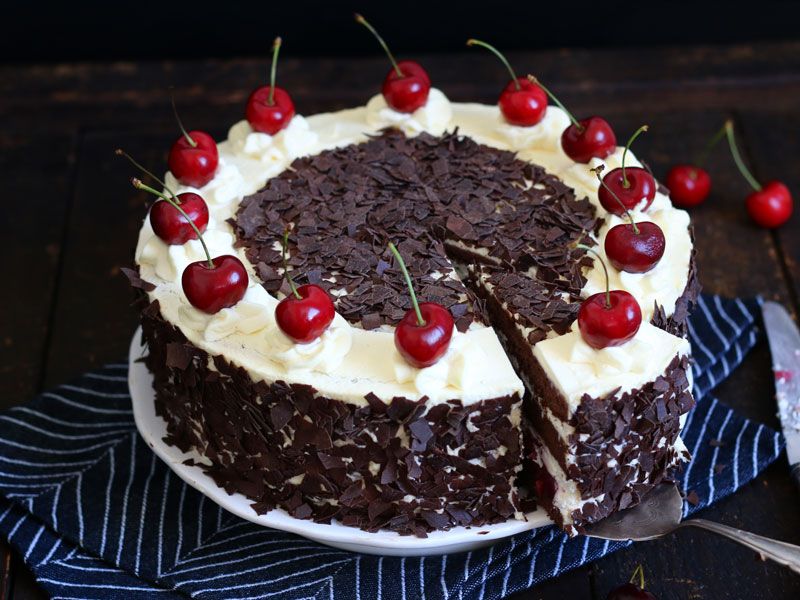
Imagine a dense, luscious cake layered with whipped cream and adorned with cherries and chocolate shavings. The Black Forest Cake, or Schwarzwälder Kirschtorte, is a beloved classic from the Black Forest region in Germany. Its origins can be traced back to the early 20th century, where it was inspired by the costumes and cherry brandy of the region. The Black Forest Cake is an indulgent combination of rich flavors and textures, making it a favorite for celebrations. This decadent dessert is not only a feast for the taste buds but also a symbol of German confectionary artistry.
Bavarian Cream (Bayrische Creme)
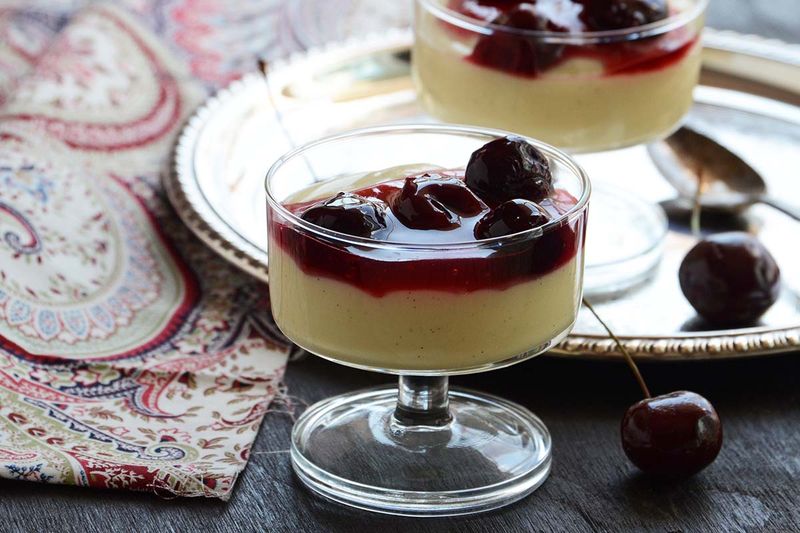
Bavarian Cream, or Bayrische Creme, is a smooth and velvety dessert that has charmed dessert lovers for centuries. Originating from Bavaria, this delightful treat is made from a delicate blend of milk, sugar, eggs, and cream, often flavored with vanilla. Known for its luxurious texture, Bavarian Cream is typically served with fruit or as a filling in pastries. This dessert reflects the rich culinary heritage of Bavaria, where simplicity and elegance meet in a harmonious culinary dance. Its timeless appeal continues to captivate those in search of a classic yet refined sweet taste.
Stollen
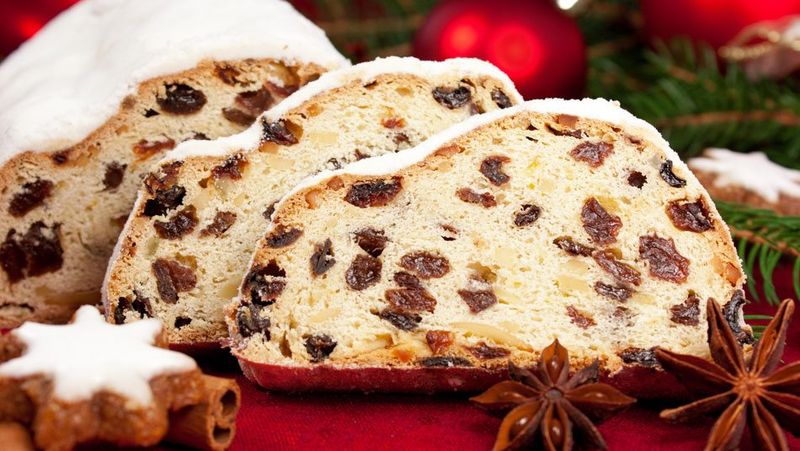
Stollen is a festive bread that has been a staple in German Christmas celebrations for centuries. This rich and fruity bread is filled with nuts, spices, and dried or candied fruits, often dusted with a generous coating of powdered sugar. Originating from Dresden, Stollen was first recorded in the 15th century and has since become a cherished holiday tradition. Its dense and flavorful composition symbolizes abundance and prosperity, making it a favored gift during the festive season. The Stollen’s warm aroma and intricate flavors continue to enchant people worldwide.
Lebkuchen

Lebkuchen, often referred to as German gingerbread, is a traditional spiced cookie enjoyed especially during the Christmas season. Its roots can be traced back to the monasteries of Franconia, where it was first baked by monks in the 13th century. Made with honey, spices, and nuts, Lebkuchen comes in various shapes and sizes, often decorated with icing or chocolate. This aromatic treat embodies the spirit of German festivities, with each bite offering a symphony of warm flavors. Its long history and connection to German holiday customs make Lebkuchen a true culinary treasure.
Berliner

The Berliner is a delightful jelly-filled doughnut that is a favorite across Germany. Known as Pfannkuchen in Berlin, this sweet treat has a light, fluffy texture and is typically filled with fruit jam or custard. Its origin dates back to the 16th century when it was first crafted by German bakers. Berliners are synonymous with joyous occasions and are often enjoyed during celebrations like New Year’s Eve and Carnival. Their sweet, tender dough and vibrant fillings offer a taste of happiness to all who indulge. These iconic doughnuts remain a beloved part of German culinary culture.
Baumkuchen
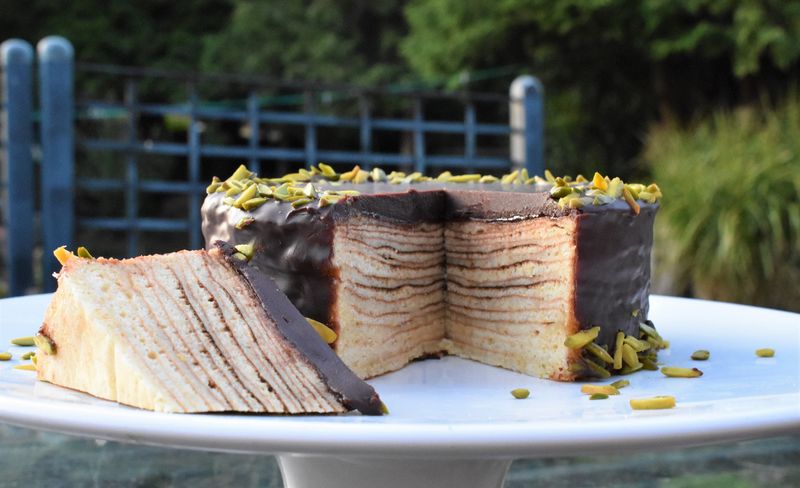
Baumkuchen, known as the “tree cake,” is a layered dessert that is as much a visual delight as it is a culinary one. This cake is made by meticulously baking thin layers of batter onto a rotating spit, creating a tree ring effect. Originating from Germany in the 19th century, Baumkuchen is a symbol of craftsmanship and patience. Each layer reflects the dedication and precision of the baker, resulting in a cake that is both tender and rich. Often coated with chocolate or sugar glaze, Baumkuchen is a testament to the artistry of German baking.
Marzipan
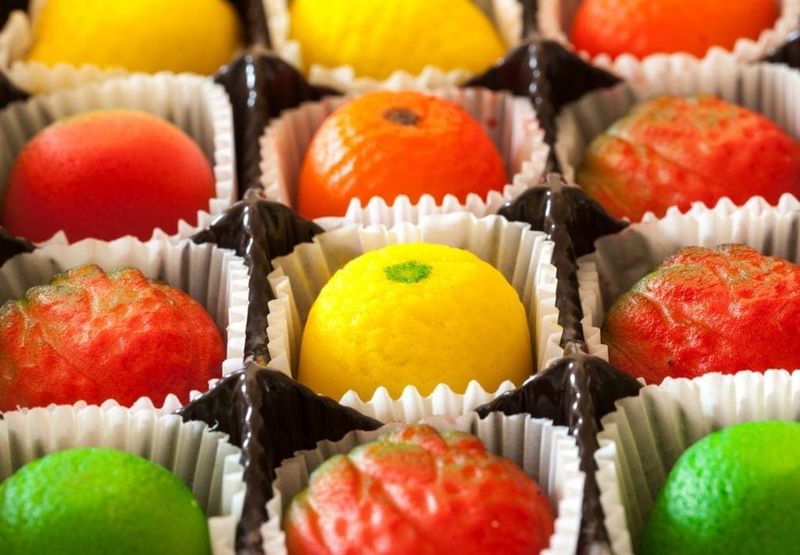
Marzipan, a sweet almond paste, has been a staple of German confectionery for centuries. Known for its pliability, marzipan is often shaped into intricate fruits and figures, showcasing the creativity of artisans. Its origins can be traced back to Persia, but it became popular in Europe during the Middle Ages. In Germany, marzipan is especially associated with the city of Lübeck, where it is crafted with great pride and skill. The delicate almond flavor and smooth texture of marzipan make it a beloved treat, perfect for both festive occasions and everyday indulgence.
Quarkbällchen
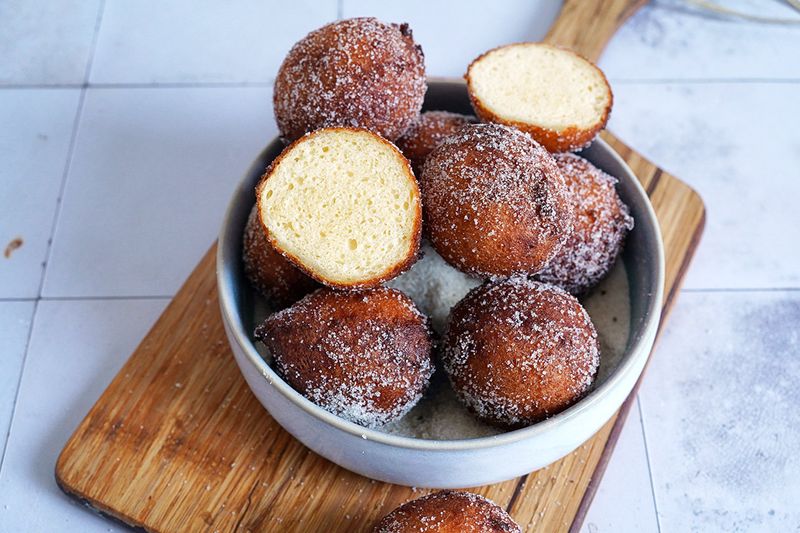
Quarkbällchen are small, round doughnuts made with quark cheese, offering a delightful twist on traditional pastries. These bite-sized treats are crispy on the outside and soft on the inside, with a subtle tang from the quark. Originating from Bavaria, Quarkbällchen are a popular snack at fairs and festivals. Their light, airy texture and gentle sweetness make them a favorite for both young and old. Served warm and dusted with sugar, Quarkbällchen provide a comforting taste of German tradition. They are a testament to the country’s love for simple yet satisfying desserts.
Bienenstich (Bee Sting Cake)

Bienenstich, or Bee Sting Cake, is a delightful combination of sweet dough, creamy filling, and crunchy almond topping. Legend has it that the cake was named after a group of bakers who successfully defended their village from invaders using beehives. The cake itself is a masterpiece of flavors and textures, with the honey-glazed almonds adding a distinct crunch. Bienenstich’s origins are deeply rooted in German baking traditions, making it a cherished part of the country’s culinary heritage. With each bite, you experience the harmony of creamy, crunchy, and sweet, celebrating a taste of history.
Pfeffernüsse
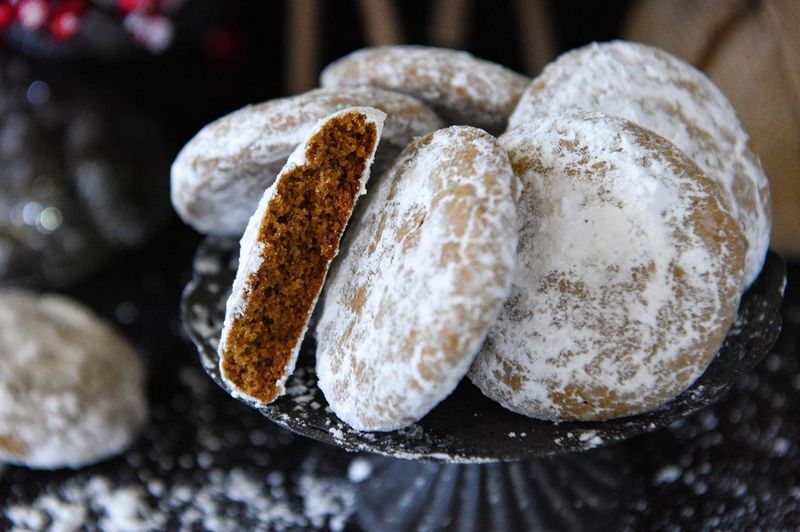
Pfeffernüsse are small, spiced cookies that are synonymous with the holiday season in Germany. These cookies are characterized by their strong aromatic flavor, thanks to the blend of spices like cinnamon, cloves, and cardamom. Their name, meaning “pepper nuts,” comes from the traditional use of white pepper in the recipe. Originating in the Netherlands and Germany, Pfeffernüsse have been a festive favorite for centuries. The cookies are often dusted with sugar, adding a sweet contrast to their spicy core. Pfeffernüsse offer a warm, inviting taste that captures the essence of a German Christmas.
Spaghettieis

Spaghettieis is a whimsical ice cream dessert that resembles a plate of spaghetti. Created in the 1960s by a German ice cream maker, this playful treat features vanilla ice cream extruded through a special press to form “noodles.” It is then topped with strawberry sauce and white chocolate shavings to mimic spaghetti with tomato sauce and cheese. Spaghettieis is both a visual and culinary delight, offering a fun twist on traditional ice cream. Its innovative presentation has made it a popular choice in ice cream parlors across Germany, delighting both children and adults with its creativity.
Apfelstrudel
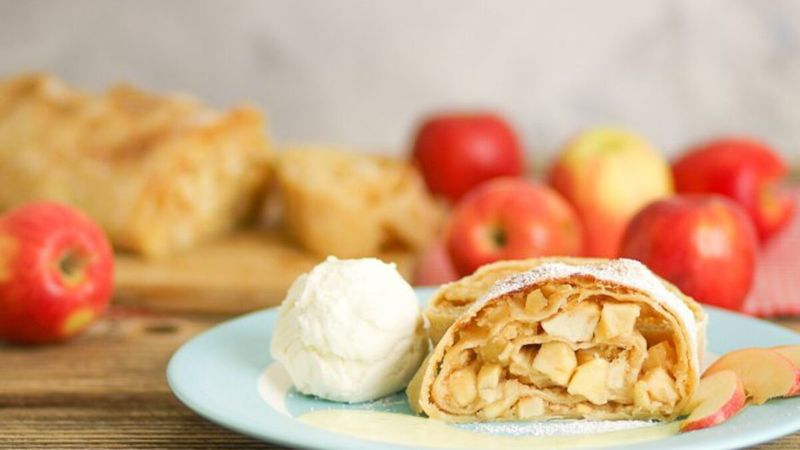
Apfelstrudel is a classic German dessert that features thinly rolled pastry filled with spiced apples, raisins, and nuts. Originating from the Austro-Hungarian Empire, it became a beloved treat in Germany. The name “strudel” means whirlpool, reflecting the pastry’s spiral appearance. Apfelstrudel is known for its flaky texture and aromatic filling, which combines the sweetness of apples with a hint of cinnamon. Often served warm and accompanied by vanilla sauce or whipped cream, Apfelstrudel offers a comforting taste of German tradition. Its timeless appeal and delicious flavors make it a cherished dessert worldwide.
Rote Grütze
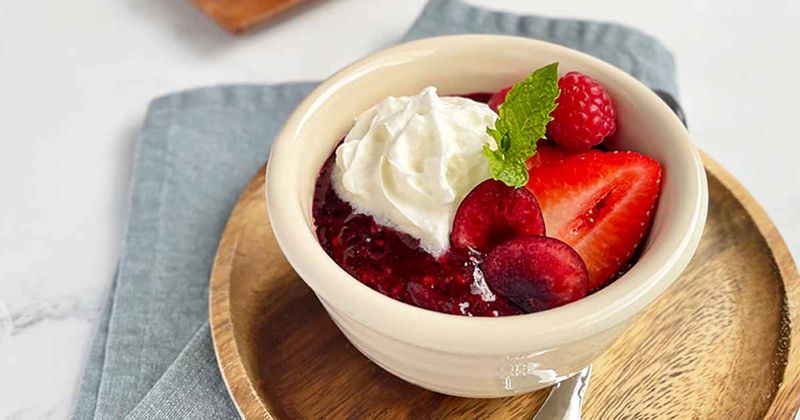
Rote Grütze is a vibrant red fruit pudding that is popular in northern Germany. Made from a medley of red berries like strawberries, raspberries, and cherries, this dessert is both refreshing and flavorful. The name “Rote Grütze” translates to “red groats,” referring to its thick, porridge-like texture. Traditionally served with vanilla sauce or cream, Rote Grütze offers a delightful balance of tart and sweet. Its origins can be traced back to the 19th century, where it became a staple in German households. Rote Grütze continues to be a favorite for those seeking a fruity and refreshing treat.
Zimtsterne

Zimtsterne, or cinnamon stars, are traditional German cookies that shine during the Christmas season. Made from ground almonds and flavored with cinnamon, these star-shaped cookies are topped with a crisp white icing. Zimtsterne have been enjoyed in Germany since the 16th century, symbolizing warmth and festivity. Their nutty flavor and delicate texture make them a cherished holiday treat. Often shared with friends and family, Zimtsterne embody the spirit of togetherness and celebration. The aromatic blend of almonds and cinnamon creates a cozy and inviting taste, perfect for the winter months.
Schneeballen
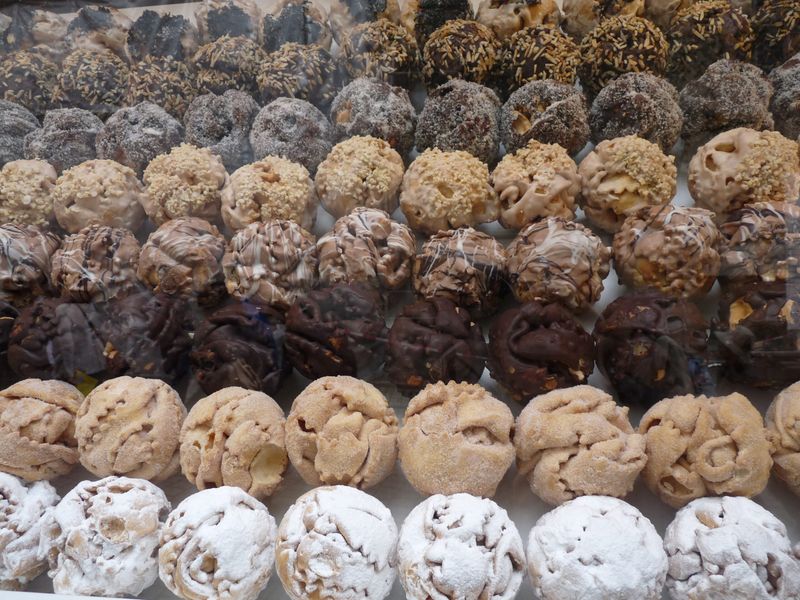
Schneeballen, or “snowballs,” are a unique pastry that originate from the Franconian region of Germany. These round, deep-fried dough balls are traditionally dusted with powdered sugar, giving them their snowy appearance. Schneeballen have been a part of German confectionery since the Middle Ages, often served during special occasions like weddings. Their crisp exterior and light, airy interior create a delightful contrast in every bite. Schneeballen showcase the creativity and diversity of German baking, offering a taste of history in each sweet, powdered mouthful. They remain a popular treat for visitors and locals alike.
Vanillekipferl

Vanillekipferl are delicate crescent-shaped cookies that originate from Austria and have become a beloved treat in Germany. Made with ground almonds and flavored with vanilla, these cookies melt in your mouth with each bite. Their origins date back to the Austro-Hungarian Empire, where they were created to celebrate a military victory. In Germany, Vanillekipferl are a staple during the holiday season, known for their buttery texture and sweet vanilla aroma. These cookies capture the essence of festive cheer and are often shared with loved ones, spreading warmth and joy during the cold winter months.
Rhabarberkuchen

Rhabarberkuchen, or rhubarb cake, is a traditional German dessert that celebrates the tartness of rhubarb. The cake features a soft, buttery base topped with fresh rhubarb and often finished with a crumbly streusel topping. Its origins are rooted in German home baking, where seasonal fruits are transformed into delightful confections. Rhabarberkuchen offers a perfect balance of sweet and tangy flavors, making it a refreshing treat for spring and summer. This cake is a testament to the German tradition of using local, fresh ingredients to create simple yet delicious desserts that bring people together.
Dampfnudeln
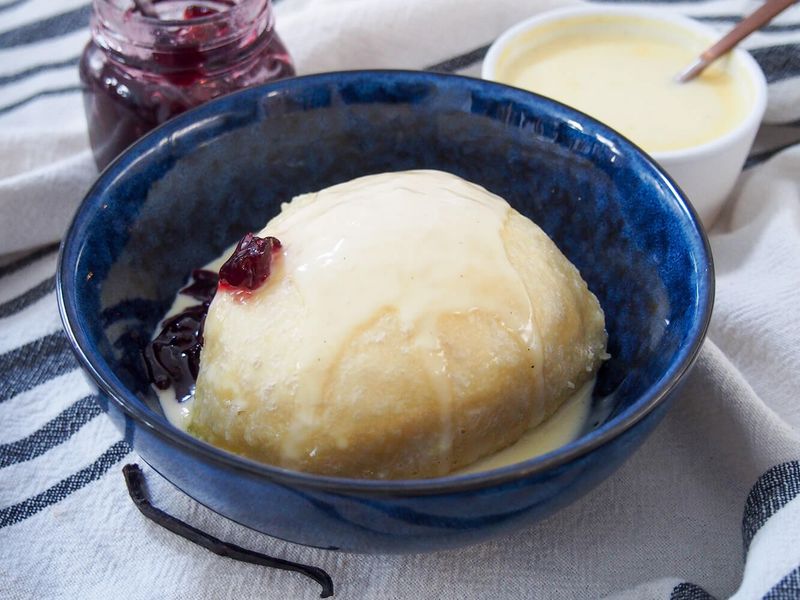
Dampfnudeln are soft, fluffy yeast dumplings that are a comforting staple in southern German cuisine. Steamed to perfection, these dumplings have a light, airy texture that melts in your mouth. Often served with vanilla sauce or fruit compote, Dampfnudeln are a celebration of simple, home-cooked flavors. Their origins can be traced back to Bavarian kitchens, where they were enjoyed as a hearty meal or dessert. Dampfnudeln reflect the warmth and hospitality of German culinary traditions, offering a taste of comfort and nostalgia with every bite. They continue to be a favorite for those seeking a cozy, satisfying treat.
Käsekuchen
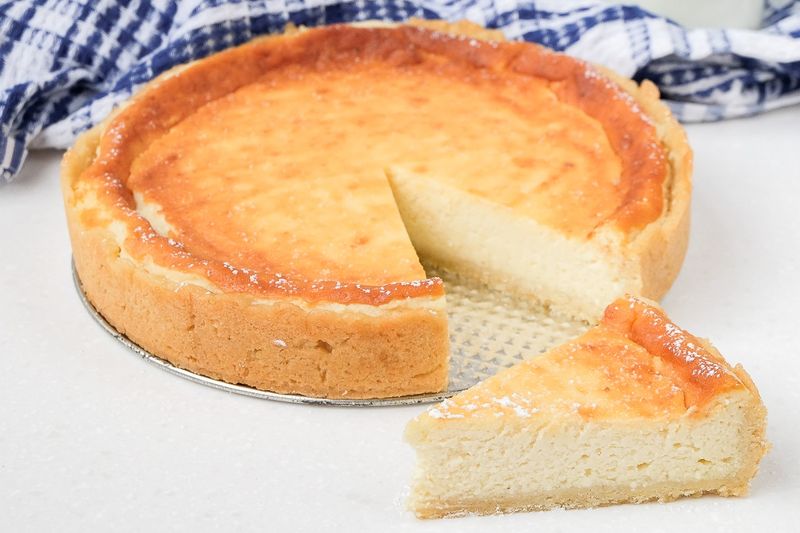
Käsekuchen, or German cheesecake, is a creamy and luscious dessert that has been a favorite in Germany for generations. Made with quark cheese, this cheesecake differs from its American counterpart by being lighter and less sweet. Its origins can be traced back to medieval Germany, where it was made as a special treat for festive occasions. Käsekuchen is often flavored with vanilla or lemon, adding a refreshing zest to its creamy base. This beloved dessert embodies the simplicity and elegance of German baking, offering a deliciously smooth and tangy experience that delights the palate.
Kirschmichel

Kirschmichel is a traditional German bread pudding made with cherries, offering a comforting and nostalgic taste of home. This dessert is typically made with leftover bread, eggs, milk, and sweet cherries, creating a soft, custard-like texture. Originating from southern Germany, Kirschmichel was a practical and delicious way to use up stale bread. Its sweet and fruity flavors, combined with its creamy consistency, make it a favorite for family gatherings and cozy evenings. Kirschmichel captures the essence of German home cooking, providing a taste of warmth and tradition with each spoonful.
Magenbrot
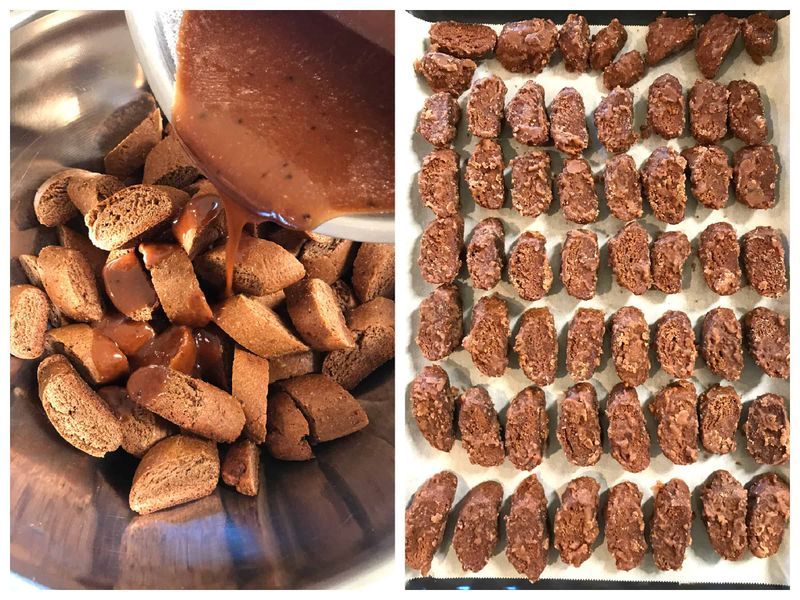
Magenbrot is a spiced gingerbread-like biscuit that is popular at German fairs and Christmas markets. Its name, meaning “stomach bread,” reflects its origin as a digestive aid. Magenbrot has a unique blend of spices, including cinnamon, cloves, and anise, giving it a warm, aromatic flavor. Often coated with a chocolate glaze, these biscuits are both sweet and slightly spicy, offering a delightful treat for the senses. Magenbrot’s rich history and distinctive taste make it a cherished part of German culinary tradition, enjoyed by those seeking a cozy and flavorful snack during the festive season.
Eierschecke

Eierschecke is a layered cake that hails from the Saxony region of Germany, known for its rich flavors and creamy consistency. This dessert features a base of yeast dough, topped with a quark cheese layer and finished with a creamy custard topping. Eierschecke’s name is derived from “Schecke,” an old German word for a layered garment, reflecting its distinct layers. The cake is often flavored with vanilla and lemon, adding a refreshing twist to its creamy richness. Eierschecke is a testament to the decadence and diversity of German pastries, offering a taste of regional pride.
Leave a comment